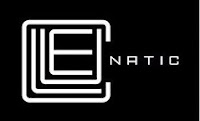Just to understand CB i played this game!!
Luckily I’ve got some live examples of the entire process of logo designing with me. Our first example would be the logo for ‘Sewa Bazaar’. This already included the concept definition based on which the logo had to be designed and it was: “SEWA’s vision of setting up SEWA BAAZAR, is to professionalize the informal vegetable sector by connecting the marginal growers and street vendors to the mainstream markets, with the objective to provide platform & support to these people (growers & vendors) in the evolving economy, and to prepare them for the new market challenges”
The logo that was created based on the requirement was:Analysis of the logo is:
Here is a self reliant and autonomous woman… bringing the freshness and purity of nature filled in her basket… straight to the same old city but in an unconventional way. She is an emerging professional who knows how to earn with dignity and pride. And the reason of her confidence is… SEWA BAAZAR.
Another logo:
Analysis: If in your weirdest dreams you can impersonate the alphabets of the English language, the alphabet C would surely stay miles away from the student fraternity of IIM Kozhikode. We have this tendency to brutally replace this poor character ‘C’ with our beloved ‘K’ from any good adjective. The logo here which was created in a hurry so as to allow the fund gain the “first mover’s advantage” is a simple representation of the word itself. The tag line cleverly associated makes it a decent fit for the mutual fund. Let’s hope that it will really ‘sky rocket’ the money even in this tumbling scenario. All the best!!
This is the last entry of my academic blog but since I’m so much into it now that I’ll anyway keep it updated and will definitely try bringing more of the original creations and my own observations. Many of the logos which I’ve used in the blog might be someone’s copyrighted material and I kindly request those ‘creative’ people to provide me their details and I’ll duly provide them their credit.
Cheers!!




















































